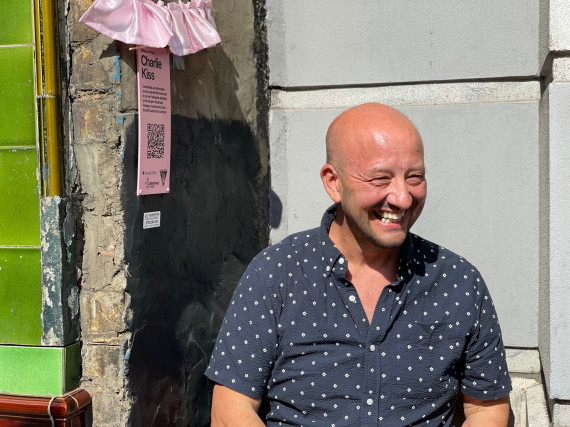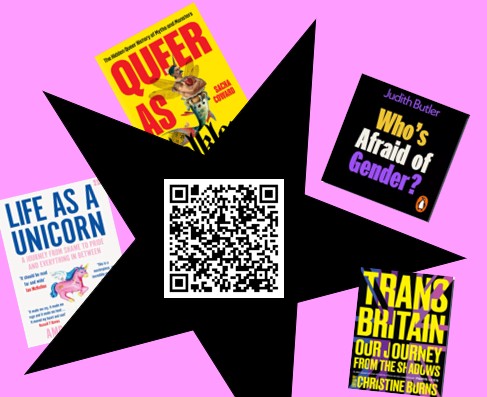Pride is a Protest!
The theme for this year’s LGBTQ+ History Month is Activism and Social Change. LGBT+ History Month was set up by Schools Out and is an annual observance dedicated to celebrating and recognising the achievements, contributions and history of LGBT+ individuals and communities. It serves as an opportunity to highlight the struggles, milestones and ongoing fight for equality within the LGBT+ movement while educating the public about important figures and events in LGBT+ history. They’ve selected five people to represent this year’s theme, which appear on a display in Augustine House in front of Library Point. But who were these five? We’ve sourced mini-biographies paraphrased from the Oxford Dictionary of National Biography, (which you can access for free as a CCCU student) with a few other sources to highlight these LGBT+ pioneers.
Annie Kenney
Suffragette (1879–1953)
Born in Lancashire among twelve siblings, her father was a cotton minder at a spinning mill. Moving house between mills, Annie lived in at least 5 different houses by the time she was 18. Drawn to socialism, she joined the Women’s Social and Political Union and became devoted to Christabel Pankhurst, interrupting meetings with ‘Votes For Women’ banners and having to use disguises while in exile. By 1913 she was arrested for protesting and went on hunger strike.
Olaudah Equiano
Anti-slavery movement writer (c. 1745 – 1797)
Born most likely in present-day Nigeria, which he describes in his autobiography as ‘in a charming vale, named Essaka’, his baptism documents describe him as a native of Carolina. Equiano travelled, witnessed and partook in battles, and was forced in and out of slavery. He worked for a Quaker and did his own trading, saving enough money to buy his freedom. He worked as a hairdresser in London before returning to travel the seas. He sent a petition to the queen and wrote abolitionist propaganda with the publication of his autobiography, The Interesting Narrative of the Life of Olaudah Equiano in which he describes what has been called ‘the classic account of the experience that was the fate of millions of Africans in the era of Atlantic slavery’ (Oxford Diction of National Biography) .
Charlie Kiss (pictured)
Protestor, campaigner (1965–2022)
Charlie Kiss was born in Paddington but moved around a lot when he was younger. He studied printing, business studies and international relations, then worked in print production and a as director of a worker’s print co-operative. Kiss was involved in an anti-nuclear protest at Greenham Common and moved into the social sector working on social housing support. He has a plaque dedicated to him outside the Lamb pub on Holloway Road as the first trans man to stand for Parliament in the UK.
Ivor Cummings
Windrush pioneer (1913–1992)
Ivor Cummings has been described as:
“A fastidious, elegant man, with a manner reminiscent of Noel Coward—he chain smoked with a long cigarette holder and addressed visitors as ‘dear boy’”. (Phillips and Phillips, p.68)
He was a civil servant, was born in West Hartlepool, co. Durham and his wartime role as the assistant welfare officer for the Colonial Office earned him a reputation as someone who would assist any black person in trouble and he was appointed OBE for his war work. Cummings was a central figure in the decisions and arrangements made within the various civil service departments for the reception of the Jamaican settlers who arrived at Tilbury on the Empire Windrush.
Further Reading
You can find out more about Charlie Kiss via the Bishopsgate Institute who have a collection, and an obituary in The Guardian.
The quoted description of Ivor Cummings is from Windrush by Mike & Trevor Phillips (Harper Collins, 1998), available in Augustine House.
We also have a curated Libby list, available by clicking this link or following the following QR Code:
And if you are in Augustine House, don’t forget to check out the third floor where you’ll find a display on the Gravesend born queer poet Thom Gunn, as part of Kent Maps Online. Alongside a selection of his books, poems and critical essays, you can find out more about how to access library resources about this ground-breaking poet and his work describing the impact of AIDS.
Lead Image: Reproduced with kind permission from the Charlie Kiss Archive, Bishopsgate Institute, bishopsgate.org.uk/collections/charlie-kiss-archive
 Library
Library Bob Henderson
Bob Henderson 817
817



